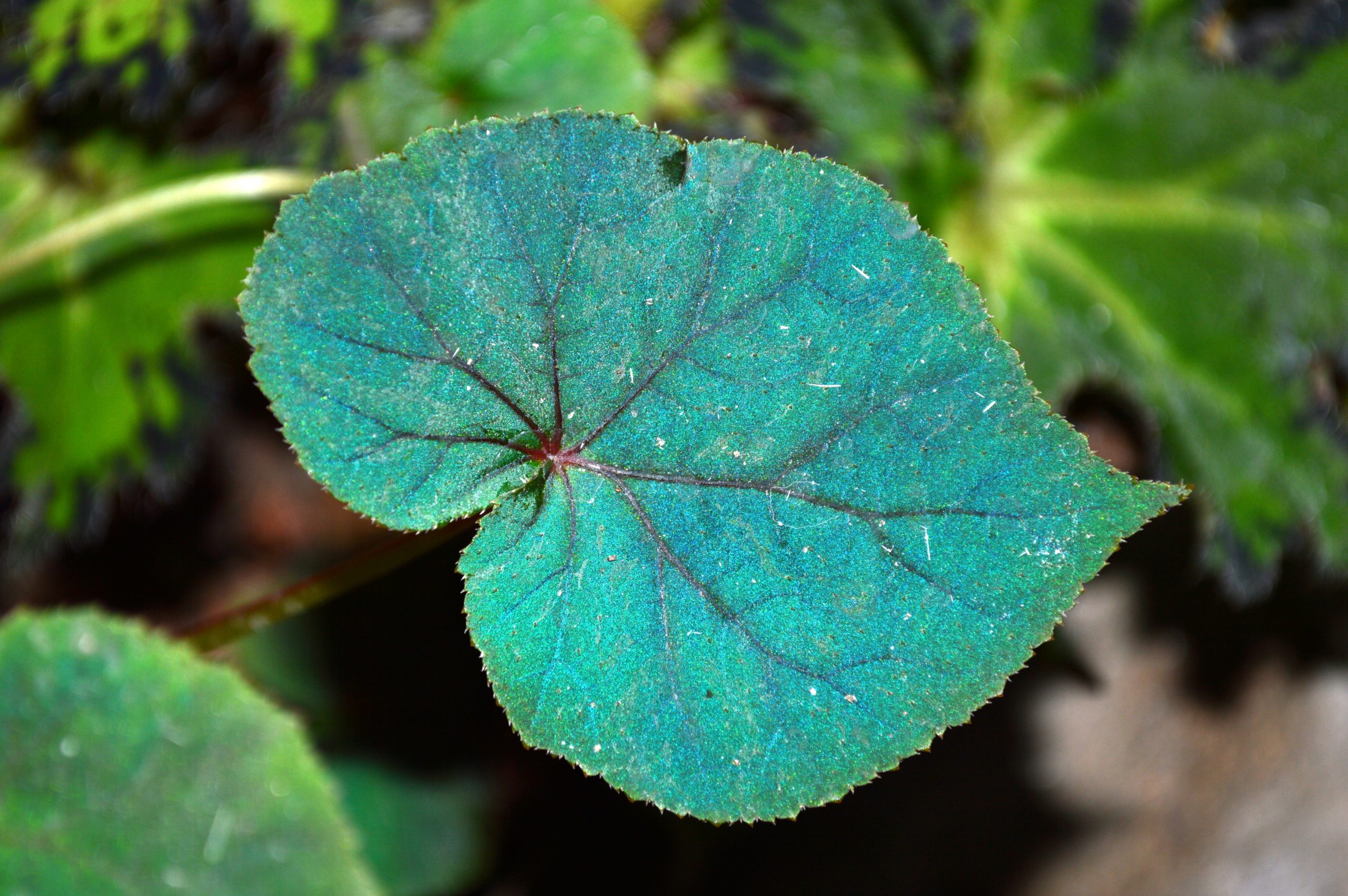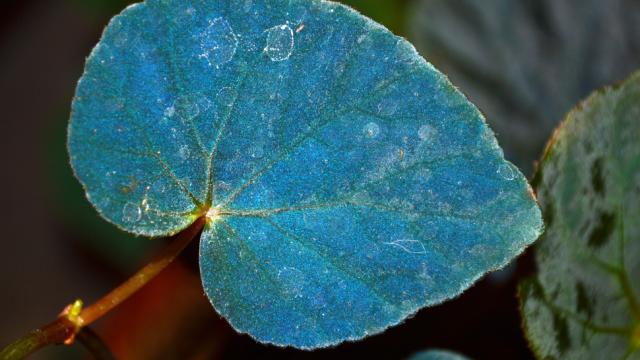When it comes to converting sunlight into food, plants overwhelming prefer the colour green. However, new research shows that at least one particular shrub defies this convention, sprouting blue leaves that do a remarkably good job of capturing sunlight when there’s very little to go around.
The brilliant iridescent blue leaves of Begonia pavonina. (Image: Matthew Jacobs)
A new paper published in Nature Research shows that the shade dwelling plant, Begonia pavonina, uses its blue leaves to enhance photosynthesis. This plant lives under the thick canopies of tropical forests in Malaysia, and it’s known for its beautiful iridescent blue leaves. Scientists assumed that the colour was strictly ornamental, but it actually helps the plant to thrive in low light conditions.
Iridescence is an optical phenomenon in which the colour or shade of an object changes according to the angle of observation and illumination. Good examples include those rainbow-like drops of petrol in puddles, or the complex coloured patterns on the surface of soap bubbles. Iridescence is also a feature of plants, which they use as a brilliant billboard advertisement to attract pollinating insects. New research by Heather Whitney from the University of Bristol suggests that iridescence plays an important role in photosynthesis as well, something that has never been shown before.
Like any plant, B. pavonina has leaves with chloroplasts on them. These organelles play an important role in photosynthesis, converting light energy from the Sun into sugars that can be used by the plant’s cells. Chloroplasts, which are almost always a shade of green, contain membranes that protect its inner parts. These membranes, called thylakoids, are organised into large stacks, and they perform the initial work absorbing incoming sunlight.

(Image: Matthew Jacobs)
Unlike most plants, B. pavonina has evolved iridescent blue leaves. This is due to its unusual chloroplasts, known as iridoplasts, which are located within its surface layers. Using traditional light and electron microscopes, Whitney’s team discovered that the internal structure of these iridoplasts are markedly different from conventional chloroplasts.
Similar to an opal, these structures have taken on the shape of a photonic crystal — a 3D structure organised in such as way that its internal structures are about the size of a single wavelength of light. This configuration allows the plant’s chloroplasts to do more than just convert light into chemical energy — they also control the spread of light and enhance their ability to capture light.
“Compared to ‘standard’ chloroplasts, these iridoplasts can capture light better and use it more efficiently,” Whitney told Gizmodo. “That’s because more more of the light energy gets ‘caught’ and passed on to the next step in photosynthesis.”
In the Malaysian forests, the light that reaches shaded plants is primarily at the green-red end of the spectrum. B. pavonina‘s iridoplasts concentrate these specific wavelengths onto the plant’s photosynthetic system, increasing the efficiency of its photosynthesis by five to 10 per cent. For plants that live on the bottom of a forest floor, those added percentages count for a lot.
B. pavonina is not the only plant that produces these distinctive chloroplasts, leading the researchers to believe that other blue-leaved plants may be doing the same thing.
“We think this feature might be more common than currently thought,” said Whitney. “Several of the Begonia species that we know have these photonic irioplasts do not look visibly iridescent — and we know that a wide range of other plants produce similar structures, but haven’t been investigated yet.”
Excitingly, this study points to some potential new research directions for the development of solar energy capture techniques that can work in low light conditions.
“Nature has found a way to combine structure that manipulates light with the light harvesting machinery,” Whitney told Gizmodo. “This is rather novel in terms of solar energy capture, so could serve as inspiration for future work.”
